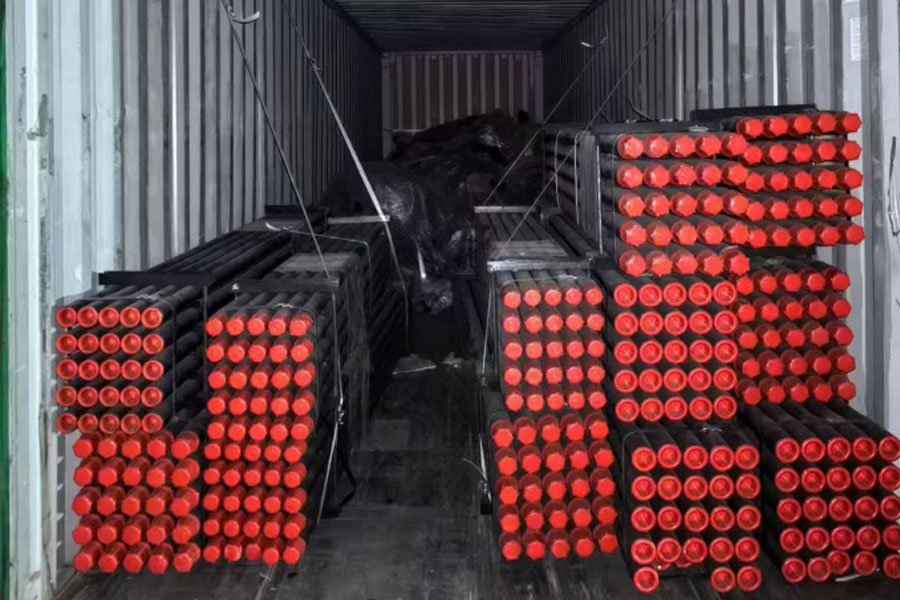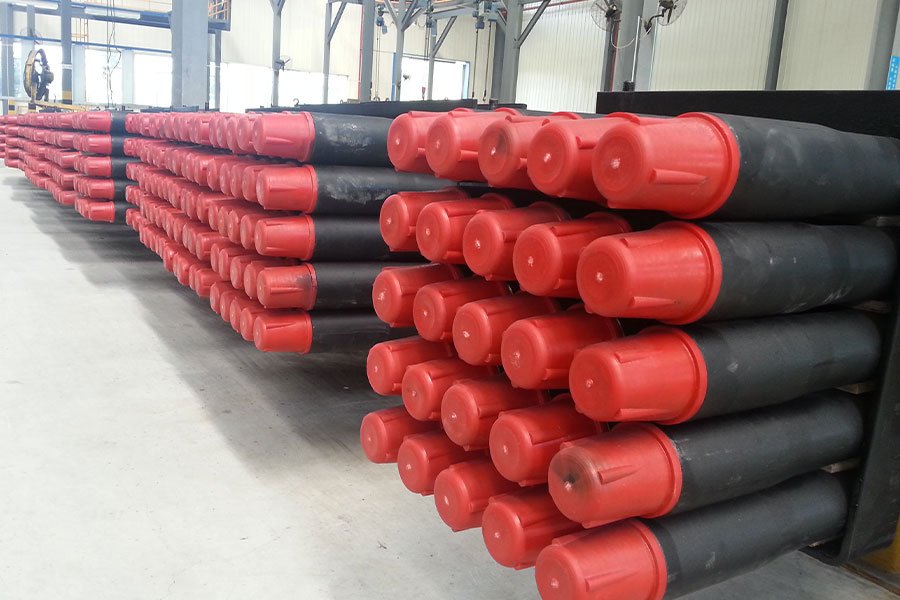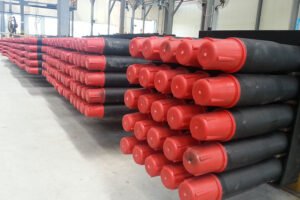How to Choose the Right Drill Rod for Your Horizontal Directional Drilling Project?
In the world of horizontal directional drilling (HDD), drill rod is far more than just a simple connecting tube. It’s the lifeblood of your project’s success, the core channel that precisely transmits the drilling rig’s power to the drill bit and traverses complex underground terrain. Choosing the wrong drill rod is like wearing the wrong running shoes for a grueling marathon—at best, it can lead to inefficient performance and soaring costs, while at worst, it can cause expensive drill bits to become stuck, drilling failures, and even safety incidents. Faced with a dazzling array of specifications, materials, and grades on the market, how can you make an informed choice to ensure your HDD project proceeds smoothly, efficiently, and safely? This is no casual decision; it’s a crucial one that can determine the success of your project.

Understanding the complexity of drill rod selection is the first step. It’s not a one-size-fits-all approach. Different soil and rock characteristics (from soft clay to hard gravel or bedrock), the project’s planned borehole length, depth, bend radius, required push and pull forces and torque, and even the type and pressure of drilling fluid all profoundly influence drill rod performance requirements. Ignoring these variables and selecting drill rod based solely on experience or price is like navigating uncharted waters, a highly risky endeavor.
Therefore, before embarking on your next HDD project, it’s crucial to take the time to thoroughly understand the science of drill rod selection. This isn’t just about buying a pipe; it’s about customizing the most appropriate “power transmission solution” for your specific engineering challenge. In the following, we’ll delve into the core factors influencing drill rod selection, providing clarity and practical guidance to help you navigate the complexities and accurately match your project with the right drill rod —the key to success .
Let’s focus on the seven core cornerstones that determine drill rod performance and suitability . Understanding and carefully evaluating these seven aspects will provide you with a clear path to finding the right drill rod for your specific horizontal directional drilling project. Next, we’ll explore each of these key factors:
- Outer Diameter
- Length
- Bending Radius
- Torque
- Pressure Resistance
- Weight
- Applicable Media
Outer Diameter Size Adapts to Different Equipment
Small drill rod has an outer diameter of 50-89mm. A municipal pipeline repair project used a 60mm outer diameter drill rod, suitable for small directional drilling rigs. When working under sidewalks, ground disturbance is ≤0.5m. Medium drill rod has an outer diameter of 114-168mm. A 127mm drill rod was used in a highway crossing project. Used with a 200mm drill bit, it can drill a hole up to 100m in a single pass. Large drill rod has an outer diameter of 219-325mm. A 273mm drill rod was used in an oil pipeline crossing project. It can pull back a 400mm pipeline at a speed of 5m/min. The outer diameter deviation is ≤±0.5mm. A batch of 114mm drill rod measured 114.3mm, ensuring a tight fit with the joints.
Length Specifications Affect Construction Efficiency
Standard single-rod lengths range from 3-6m. A 3m drill rod is used in a residential pipe network construction project, allowing for flexible maneuverability in narrow spaces with a minimum turning radius of 5m. Long drill rods range from 9-12m. A 12m drill rod is used in a long-distance crossing project. This reduces the number of joints, requiring 23 fewer joints per 100m of drill rod than a 3m drill rod, thus minimizing leakage risks. The length tolerance is ±5mm. A 6m drill rod measured 5,997mm, meeting the required joint accuracy, with a joint gap of ≤0.2mm.
Bend Radius Determines Turning Ability
The minimum bending radius is related to the outer diameter. For a 114mm outer diameter drill rod, the minimum bending radius is ≥6m. A municipal project, during construction at a street corner, required a 6m radius turn without permanent deformation of the drill rod. Large-diameter drill rod (273mm outer diameter) has a minimum bending radius of ≥15m. In a railway crossing project, the route was planned according to an 18m radius, resulting in uniform stress distribution on the drill rod, with a bending stress of ≤200MPa per meter. The single bending angle is ≤3°. During pilot hole construction, a drill rod experienced a cumulative bending angle of 30° and still transmitted torque normally.
Torque Transmission Performance Affects Drilling Efficiency
Rated torque is determined by outer diameter. An 89mm drill rod has a rated torque of 2,000 N·m. During drilling in a clay layer, the actual torque was 1,800 N·m at a drilling speed of 2 m/min. A 168mm drill rod has a rated torque of 5,000 N·m. In moderately weathered rock, the torque was maintained at 4,500 N·m, with a drilling speed of 0.5 m/h. Torque transmission efficiency is ≥95%. In one test, an input torque of 1,000 N·m resulted in an output torque of 960 N·m. Losses primarily stem from joint friction.
Pressure Resistance Suitable for Mud Circulation
The operating pressure is 10-30 MPa. A certain horizontal directional drilling (HDD) drill rod has a design pressure of 20 MPa. At a mud displacement of 500 L/min, the internal pressure remains stable at 15 MPa with no leakage. The burst pressure is ≥ 3 times the operating pressure. A certain 20 MPa drill rod has a burst test pressure of 65 MPa, far exceeding safety standards and ensuring it will not rupture in the event of an accidental blockage. The pressure loss is ≤ 0.5 MPa/100 m. A certain 1000 m long drill rod has a mud inlet pressure of 25 MPa and an outlet pressure of 20 MPa, meeting slag carrying requirements.
Weight Parameters Affect Equipment Load
Weight per unit length varies depending on the material and wall thickness. For example, 114mm drill rod weighs 25kg per meter. A drilling rig equipped with 200m of drill rod weighs 5,000kg, which is within the rig’s load capacity. 273mm drill rod weighs 80kg per meter. A large directional drilling rig can carry 500m of this drill rod, weighing 40,000kg, but requires special permission for operation. Weight tolerance is ≤±2%. A batch of 168mm drill rod, nominally 45kg per meter, measured 44.2kg, meeting the standard.
Applicable Medium Determines the Scope of Application
The inner wall of water-based mud drill rod is corrosion-resistant. In a project crossing farmland, the drill rod transported humus-containing mud, and after 60 days, the inner wall was free of rust. Oil-based mud drill rod requires oil-resistant seals. A shale gas horizontal well drill rod operated in diesel-based mud, and the joint seals showed no signs of aging after three months. drill rod for special media (such as sand-containing mud) requires thicker inner walls. A geological exploration drill rod with an inner wall thickened to 10mm has a wear lifespan 50% longer than standard drill rod.

By systematically considering the seven core factors outlined in this article , you’ll have a solid foundation for making informed decisions. Remember, the right drill rod is your reliable “blood vessels” through the subsurface—choosing it means choosing a solid path to a successful project completion. Before starting your next drill hole, be sure to apply this knowledge or consult an expert to ensure you’ve chosen the right “key” for your challenge. If you have any questions about drill rod , contact ZHE’s professional team.
- Outer Diameter Size Adapts to Different Equipment
- Length Specifications Affect Construction Efficiency
- Bend Radius Determines Turning Ability
- Torque Transmission Performance Affects Drilling Efficiency
- Pressure Resistance Suitable for Mud Circulation
- Weight Parameters Affect Equipment Load
- Applicable Medium Determines the Scope of Application
SHARE:
More Posts for You
*We respect your confidentiality and all information are protected.

